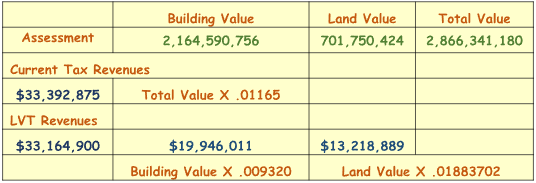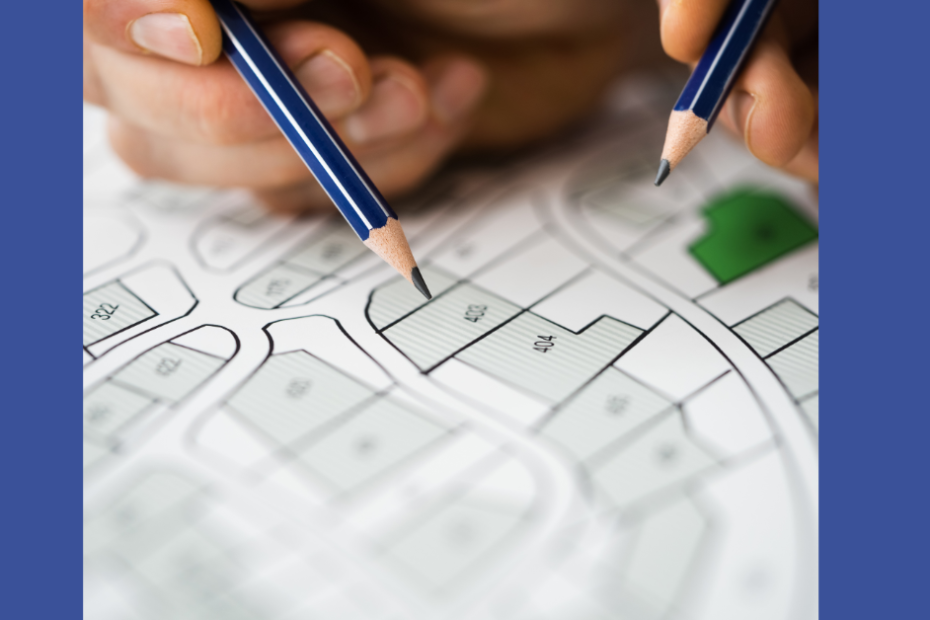Imagine speaking to a Mayor and City Council. They accept the idea of a two-rate land value tax (LVT), meaning a higher tax on land assessments and a lower tax on building assessments.
They agree LVT is a worthwhile change. However, keep in mind that the city will raise the same revenue as from its current one-rate property tax. So, the city government will likely expect these probable deliverables:
- The two-rate tax will lower taxes for most homeowners compared to what they are currently paying. As for tenants (anyone or any company paying rent) will, in the medium or long run, pay less in space rent than they now pay;
- The two-rate tax will increase new construction and rehabilitation at no long term cost to the taxpayer; many substantiate this claim;
- The two-rate property tax will help curb a city’s revenue-losing appeals, which reduce building assessments;
- The two-rate property tax is a powerful tool to end urban sprawl in the clean-and-green countryside.
- Suppose then a city official says to you, “OK, I like the idea, but how do I convert our current, one-rate property tax to a two-rate property tax raising the same revenue for the city?”
Get out your laptop, and use the following calculations. At first glance, it may be daunting, but it’s just algebra. All are all derived from the following simple formula:
Revenue = Assessments x rate
Let’s give it a test drive, step-by-step, using the example of Erie, PA:
Erie, Pennsylvania, must raise $33.4 million in property taxes for 2021.
$33.4 million = Assessments x rate
Taxable assessments (the values of homes, businesses, vacant land, etc.) are $2.866 billion.
$33.4 million= $2.866 billion x rate
What’s the “rate?” By dividing assessment by revenue: $2,866,000,000÷ $33.4 million.
$33.4 million= $2.866 billion x .01165
The tax rate for Erie in 2021 is .01165, also known as 1.165%, also known as 11.65 mills.
Try it at home; your results will not vary.
We add one more calculation to get the land value tax.
Calculating the land tax rate (p=proposed) when the building tax rate (p= proposed) is known (a small arbitrary percentage of the current rate; in this example, we are reducing the PTRc by 20%) the citywide building assessments (BA) and land assessments (LA). Here are the two rates which will yield the same revenue for the city as the current property tax rate
LTRp = (PTRc – BTRp) x (BA/ LA) + .01165
Let’s return to Erie Pennsylvania, and try this step-by-step
0.018837= (0.01165-0.00932)*3.0845592+0.01165
To recap: 11.65 mills subtracted by 9.32 mills is multiplied by a Building to Land Ratio. Finally, you finish by adding the current tax rate of 11.65 mills. The result: proposed LTR is 18.837 mills.
How does that stack up to Erie’s need for $33.4 million?
Here are the numbers. We reached revenue neutrality (not entirely due to rounding).

This formula is the standard LVT used in US jurisdictions. However, several other methods exist for implementing a land revenue-based tax system. These methods have distinctly different revenue impacts to achieve equity and true tax progressivity.
LVT is a tool that supports existing economic development strategies.
- Infill directed – frees lots for buildings
- Compact – produce more efficient, consolidated units
- Dense – incentive to build upward
- Affordable Housing – lower incomes qualify for a loan
- Distinctive Communities – invest in homes without a tax increase
- Mixed-Use, Walkable – density draws stores, retail, and entrepreneurial activity
Are you interested in determining the tax rates in your municipality? CPTR will happily do it for you. Contact our outreach coordinator!

